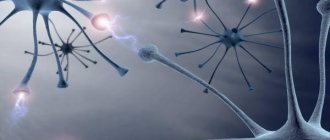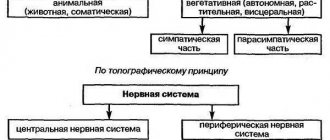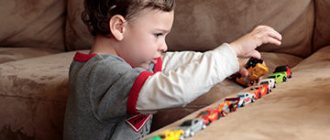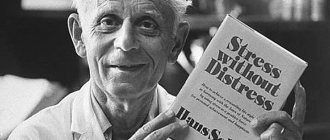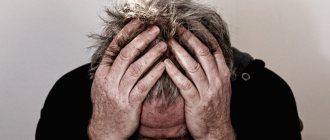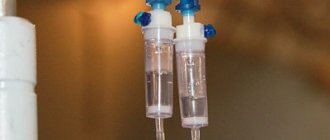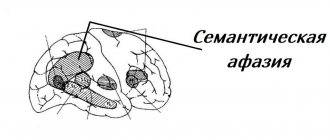Test with answers on the topic “Autism spectrum disorders: diagnosis, treatment, observation”
Inclusive education of children with autism spectrum disorders involves training in general educational institutions. Dysneurontogenesis in autism spectrum disorders is caused by widespread diffuse changes in the brain of various types.
1. The manifestation of autism spectrum disorders is associated with
1) pathological activation of acquired immunity; + 2) pathological activation of innate immunity; + 3) general decrease in immunity; 4) increased activity of “natural killers”.
2. The opioid hypothesis of autism spectrum disorder is associated with
1) the formation of casomorphins and glutenomorphins; + 2) the formation of exorphins; + 3) increased production of endorphins; 4) drug use by parents of autistic children.
3. Affective and cognitive hypotheses link autism spectrum disorders to
1) violation of social perception; + 2) improper upbringing such as emotional rejection; 3) secondary emotional deficit; 4) primary emotional deficit.+
4. What scales are used to screen for ASD?
1) Clinical Global Impression (CGI) scale; 2) PANSS scale; 3) CARS scale; + 4) M-CHAT scale. +
5. The most important instrumental methods for diagnosing autism spectrum disorders include:
1) rheoencephalography (REG); 2) electroencephalography (EEG); + 3) electrocardiography (ECG); 4) neuroimaging methods. +
6. Infantile psychosis can manifest
1) attacks with polymorphic symptoms; + 2) depressive or manic attacks; 3) attacks with leading catatonic symptoms; + 4) hallucinatory-delusional attacks.
7. “Atypical autism” primarily includes:
1) Asperger's syndrome; 2) Rett syndrome; 3) psychotic and non-psychotic autistic disorders with atypical symptoms; + 4) psychotic and non-psychotic autistic disorders at an “atypical age” (after 3 years). +
8. Asperger syndrome is characterized by:
1) decrease in intelligence in 75% of cases; 2) normal intelligence; + 3) high intelligence; + 4) decrease in intelligence in 100% of cases.
9. Course and outcome of Asperger's syndrome:
1) patients cannot create families; 2) in 60% of cases, a schizoid personality with sensitive character traits is formed; + 3) patients are disabled; 4) by the age of 16–17, autism softens.+
10. What atypical antipsychotics are used to treat autism spectrum disorders?
1) risperidone; + 2) aripiprazole; + 3) chlorpromazine; 4) haloperidol.
11. Prognosis for autism spectrum disorders
1) in most cases favorable; 2) different, depending on the clinical form of ASD; + 3) improves with timely prescribed and long-term pharmaco- and psychosocial therapy; + 4) always unfavorable.
12. Inclusive education of children with autism spectrum disorders implies
1) training according to an individual curriculum; 2) training in correctional educational institutions; 3) studying at home according to the general education program; 4) training in general educational institutions. +
13. Autism spectrum disorders are characterized by everything except
1) violation of the communicative function of speech; 2) social maladjustment; 3) stereotypical behavior; 4) decreased or absent ability for social interaction; 5) focal neurological symptoms. +
14. Autism spectrum disorder suffers the most
1) communicative function of speech; + 2) general speech development; 3) receptive component of speech; 4) motor component of speech.
15. When is a weakening of autistic symptoms most often observed in Kanner syndrome?
1) after 20 years; 2) after 12 years; 3) at 2-3 years; 4) at 6-8 years old. +
16. People suffer from Rett syndrome
1) children of both sexes equally; 2) more often girls; 3) more often boys; 4) exclusively girls. +
17. What diagnosis is mistakenly made in patients with infantile psychosis (in a third of all cases)?
1) epilepsy; 2) attention deficit hyperactivity disorder; + 3) mental retardation; 4) schizophrenia.
18. The classic version of childhood autism is
1) Rett syndrome; 2) Kramer-Polnov syndrome; 3) Asperger's syndrome; 4) Kanner's syndrome. +
19. Dysneurontogenesis in autism spectrum disorders is caused by
1) local lesions of the temporal regions of the brain; 2) diffuse changes in the brain of the same type; 3) local lesions of the frontal cortex; 4) widespread diffuse changes in the brain of various nature. +
20. High-functioning autism is characteristic of
1) Kanner's syndrome; 2) Asperger's syndrome; + 3) atypical childhood psychosis; 4) Rett syndrome.
21. Non-drug therapy for autism spectrum disorders includes all except
1) speech therapy correction; 2) non-directive hypnotherapy; + 3) neuropsychological correction; 4) psychological and pedagogical correction.
22. Autism spectrum disorders are
1) a group of socially determined mental development delays; 2) a group of partial mental development disorders; 3) a group of complex disintegrative mental development disorders; + 4) a group of atypical variants of mental retardation.
23. Psychological and pedagogical correction for autism spectrum disorders
1) carried out simultaneously with psychopharmacological treatment; + 2) carried out after the end of psychopharmacological treatment; 3) is carried out rarely, as needed; 4) is an alternative to psychopharmacological treatment.
24. Working with parents of an autistic child includes everything except
1) training in coping skills in a crisis situation; 2) dance movement therapy; + 3) training in ways of constructive interaction between all family members; 4) psychoeducation; 5) psychotherapeutic support.
25. Differential diagnosis of autism spectrum disorders is carried out with all of the following diseases, except
1) mental retardation; 2) organic brain damage; 3) epilepsy; 4) schizophrenia; 5) stuttering. +
26. The formation of which neurotransmitter systems is disrupted primarily in autism spectrum disorders?
1) dopamine; 2) glutamate; + 3) serotonin; 4) norepinephrine.
27. Manifestation of symptoms of autism spectrum disorders according to ICD-10 is noted
1) up to a year; 2) up to 5 years; 3) up to 4 years; 4) up to 3 years. +
28. Diagnostic criteria for autism spectrum disorders according to ICD-10 include all of the following except
1) qualitative violations of social interaction; 2) qualitative changes in communication; 3) apathetic-abulic manifestations; + 4) stereotypies in behavior, interests, activities.
29. Kanner syndrome is characterized by
1) decrease in intelligence in 75% of cases; + 2) high intelligence; 3) normal intelligence; 4) decrease in intelligence in 100% of cases.
30. Applied behavior analysis is one of the methods
1) speech therapy correction of ASD; 2) neuropsychological correction of ASD; 3) psychoanalysis; 4) psychological and pedagogical correction of ASD. +
31. Ratio of incidence of autistic disorders in boys and girls
1) 3 times more often in girls; 2) 2 times more often in boys; 3) 3-4 times more often in boys; + 4) is 1:1.
32. Among normothymic and anticonvulsant drugs for the treatment of autism spectrum disorders, all are recommended except
1) lamotrigine; 2) carbamazepine; 3) valproic acid; 4) phenytoin. +
33. Severity of autism according to the CARS scale in Kanner syndrome
1) mostly light; 2) mostly heavy; + 3) mostly mild or moderate.
34. Syndromic non-psychotic forms of atypical autism include all except
1) Martin-Bell syndrome; 2) autistic manifestations in tuberous sclerosis; 3) Asperger's syndrome; + 4) autistic manifestations in phenylketonuria; 5) autistic manifestations in the structure of Angelman syndrome. 6) autistic manifestations in the structure of Down syndrome.
35. Other disintegrative disorders of childhood (code F84.3) include all, except
1) Heller's syndrome; 2) symbiotic psychosis; 3) Kramer-Polnov syndrome; 4) disintegrative psychosis; 5) Kanner's syndrome.+
36. Risk of recurrence of autism spectrum disorder in siblings
1) slightly increased; 2) increased 20 times compared to the general population; + 3) practically absent; 4) increased 5 times compared to the general population.
37. To improve cognitive functions in the pharmacotherapy of autism spectrum disorders, all of the following antipsychotics are used, except
1) chlorpromazine; + 2) aripiprazole; 3) risperidone; 4) clozapine.
38. Autism spectrum disorders are considered under a single diagnosis in the classification
1) DSM-IV-TR; 2) ICD-10 (adapted version for the Russian Federation); 3) DSM-5; + 4) ICD-10 (international version).
39. Outcome of Rett syndrome
1) favorable; 2) relatively unfavorable; 3) unfavorable in 100% of cases; + 4) relatively favorable.
40. The etiology of Rett syndrome is associated with
1) traumatic brain injury under the age of 1 year; 2) mutation of a gene located on the X chromosome; + 3) previous neuroinfection before the age of 1 year; 4) mutation of a gene located on the Y chromosome.
Diagnosis of autism: problems and solutions
The diagnosis of autism in Russia is in its infancy. Children inevitably go through standard stages of socialization: clinic, kindergarten, school. If a child has autism spectrum disorders, specialists will most likely pay attention to him and inform parents about the need to consult a child neurologist and psychiatrist. It is this, and not the increasing incidence of autism, that is the reason for the so-called epidemic: they have begun to be diagnosed more often, but this does not mean that there were fewer autistic people before.
If autism was not noticed in childhood, it is more difficult to identify it in adolescence: the hormonal storm of adolescence makes mood swings common in all teenagers, not just autistic people.
The hardest thing is with adults. The cause of their problems is sought in anything but autism, and the reason for this is the established stereotype that ASD is a childhood disease and goes away with age. Firstly, it is not always a disease, and secondly, it does not go away. Learning to dance on a prosthesis is not the same as growing a new leg. As a result, adult autism is their own problem. With children and teenagers, things are also not so smooth: the hope in specialists is sometimes not justified. And then it is the parents’ task to exclude (or confirm) autism.
Testing and self-diagnosis will help you suspect autism and contact a doctor who specializes in this particular developmental feature as quickly as possible.
A selection of useful videos about ASD, signs and diagnosis (English, but much is clear without words):
Problems of self-diagnosis of autism in children and adults
The main question is when to resort to self-diagnosis. The answer to this depends on whether you suspect this condition in your child or in yourself.
One of the signs of autism with intact intelligence is considered to be Savant abilities - significant progress in some area (memorization, drawing, counting, reading, etc.) compared to children of the same age. This is what sometimes disorients parents. From their point of view, the child is doing well, he does a lot better than his peers, he knows more than they do. Difficulties with speech that often occur are attributed to a choleric temperament, a late visit to a speech therapist, or a change of teeth, but the main problem is not noticed: lack of knowledge.
